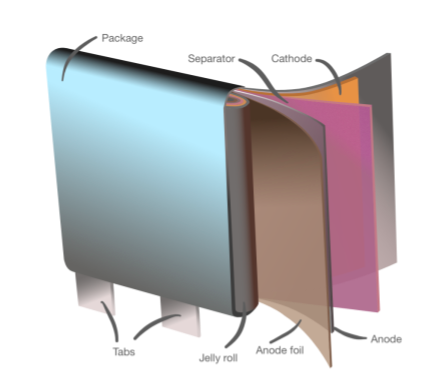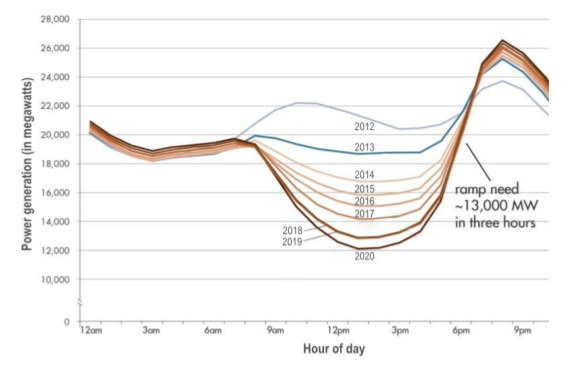This article is part of an expert series written by industry experts. In this part, Nadim Maluf, the CEO of Qnovo Inc, discussed the impact of the electrical grid and lithium-ion batteries breakthrough.
The Royal Swedish Academy of Sciences awarded on 9 October 2019 the Nobel Prize in Chemistry to three scientists for “the development of the lithium-ion battery.” It was a long overdue recognition for John Goodenough, Stanley Wittingham and Akira Yoshino, and for the thousands of engineers and scientists who have made rechargeable batteries a pillar of a mobile society.
Any person around the globe can associate lithium-ion batteries as the main power source in their smartphones or laptop computers, and increasingly, in new generations of electric vehicles. If you drive one, like a Tesla, you are quite fluent about its capabilities and limitations. Yet, few recognize how central lithium-ion batteries have become to our global economies — and the extent to which the “green revolution” relies on energy storage and battery systems. The purpose of this article is to shed some light on the underlying technologies and applications, both present and future.
In many respects, a lithium-ion battery is a simple device. It has two electrical terminals: positive and negative. Yet, in many other respects, it is complex or evokes a sense of complexity because it involves “chemistry,” a topic of inimical memories to many college graduates.

The basic structure of a Lithium-Ion battery
In its most basic form, a lithium-ion battery consists of three sandwiched layers rolled together inside a package: an anode, a cathode, and a porous separator in between. During charging, lithium ions travel from the cathode to the anode through the pores of the separator. The opposite occurs during discharging.
The battery inside your smartphone looks very much like the one described above. The battery inside an electric vehicle consists of hundreds — or in some cases thousands — of individual batteries (called cells) electrically connected together to provide more electrical charge and energy.
Stored energy determines the life of the battery, i.e., the duration of time the energy may be available to a user. The basic unit of energy is the watt-hour, or W.h. The energy capacity of a small smartphone battery is about 15 W.h., sufficient to power a device for a day. That of an electric vehicle is nearly 100,000 W.h, often written as 100 kWh. This amount is sufficient for a driving range of approximately 500 km – or 5 hours at highway speeds. Batteries intended for the electric grid store a far larger amount of energy, typically several million W.h, or MW.h.
The number of times the battery can be charged and discharged is called “cycle life.” In principle, charge-discharge cycling should occur indefinitely but degradation of structural materials within the battery limit its lifespan to less than 1,000 cycles. That works well for most applications.
Charge time is another measure of importance, especially for consumer devices and electric vehicles.
As the ancient saying goes, there is no such thing as a free lunch. Stored energy, cycle life and charge time are all inter-related. For example, repeated fast charging may accelerate battery damage hence shortening its lifespan (or cycle life). Such complex interactions force manufacturers to optimize the design of the battery to its intended application.
The success of lithium-ion batteries in modern times is largely due to their favorable economics. The cost of batteries plummeted in this decade from US $1,000 US per kWh to nearly $100 per kWh. Forecasters predict that electric vehicles will reach cost parity with traditional combustion-engine cars by 2024. Combined with government regulations on greenhouse gas (GHG) emissions, it is inexorably transforming the automotive and transportation industries.
Beyond consumer devices and electric vehicles, electric utilities are exploring the use of large-scale lithium-ion batteries for their grids. Many are familiar with pairing batteries to residential solar panel installations for the purpose of going off-grid. The reality is that such an application is limited in appeal to affluent suburban or rural areas; dense urban geographies will remain dependent for the foreseeable future on electric utility companies.
Several utilities around the globe are piloting the use of lithium-ion batteries to offset a timing imbalance, dubbed the “duck curve,” between electric power demand and renewable energy production. Solar power peaks in the afternoon hours causing traditional fossil fuel power plants, namely gas-powered turbines, to throttle down their production. Yet these turbines need to ramp up rapidly again in the evening to make up for rising power demand after the sun sets. This steep decline in traditional power generation in the afternoon followed by a rapid ramp in the evening causes significant stress on the grid and worse greenhouse gas emissions.
Enter lithium-ion batteries. They soak up the excess solar energy generated during daylight and then deliver it after the sun goes down. The result is a flatter power generation profile for traditional fossil fuel power plants with improved operating efficiencies, lower GHG emissions and better economics.
The California Energy Commission approved in 2018 a mandate to install solar panels on all new single-family homes constructed after 2020. Guaranteeing a steady rise in future use of solar energy, batteries become a critical component in integrating renewable sources of energy with the traditional grid.

Duck Curve: Timing imbalance between peak demand and renewable energy production in California.
(Source: California Independent System Operator CAL ISO)
Traditional grids historically consisted of large power production plants in distant locations and extensive transmission grid lines to transport the power to large urban areas.
Power plants adjusted their energy outputs to match the exact demand at that moment in time. Future grids will evolve to more distributed designs integrating renewable energy sources (e.g., solar, wind) in proximity to or within urban boundaries, with energy storage systems (to store energy when it is generated and releasing it when it is needed).
California leads the nation in energy storage with 4,200 MW of installed capacity — enough to power nearly 1 million households. California Senate Bill SB100 mandates that the state receives all its energy from carbon-neutral sources by 2045. Both the state legislature and the California Public Utilities Commission (CPUC) have imposed specific energy storage targets for investor-owned utilities operating across the state.
Looking out to the next decade, energy storage and batteries will become central to global energy and transportation policies. It is no surprise that forecasters estimate the market for lithium-ion batteries to be in excess of $300 Billion by 2030.
Main Image via Pexels
